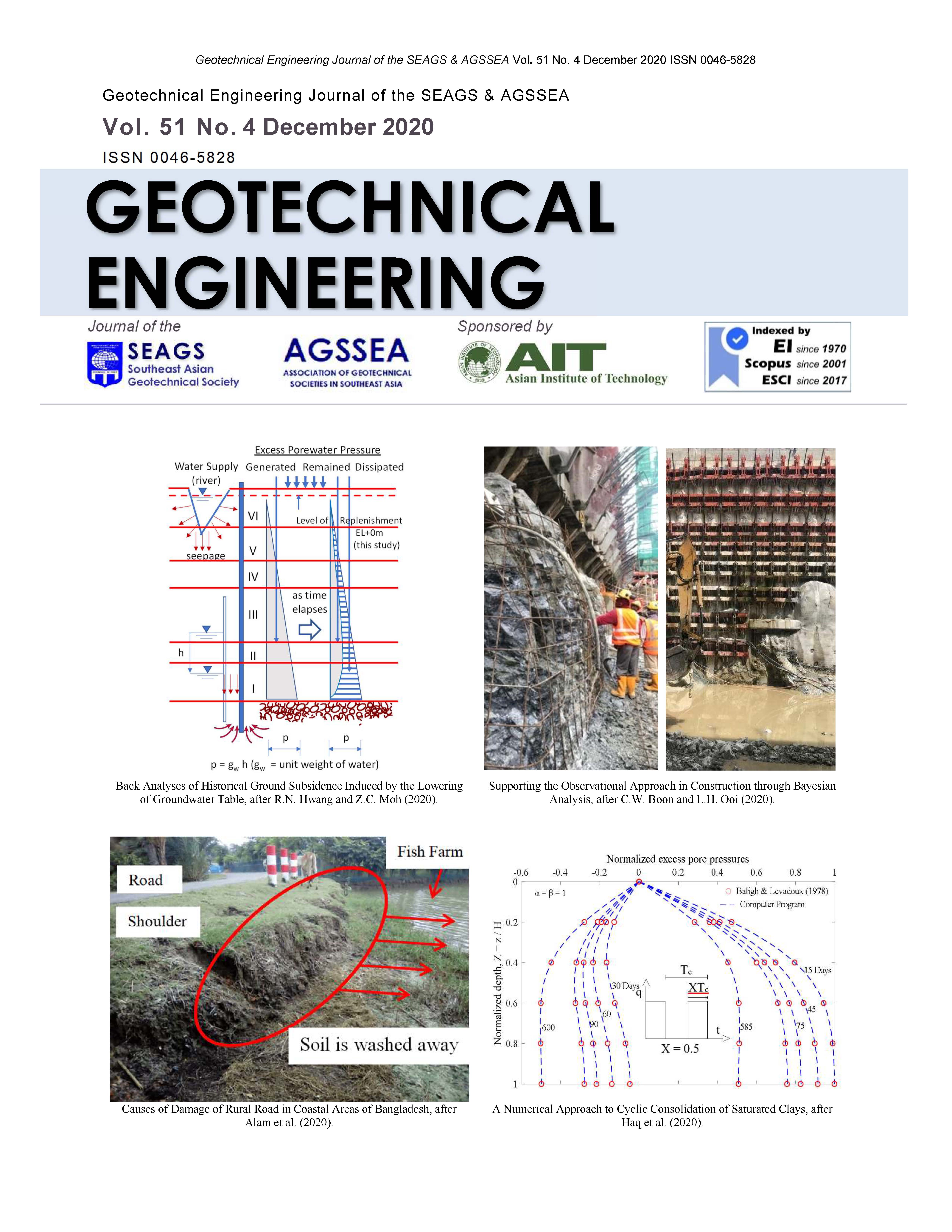The Durability of Soil-Cement Columns in High Sulphate Environments
Main Article Content
Abstract
Soil-cement column is a geotechnical solution used for ground improvement in coastal areas. However, after long periods of exposure, the strength of these columns may decrease to below their designed safe bearing capacity, ultimately resulting in failure. In this paper, the effects of high sulphate concentrations (100%, 200%, 500% and 1000% that of seawater) on the durability of soil-cement samples were examined. In addition, the simple simulation model was applied to predict the deterioration depth and long-term strength of the soil cement columns. The results show that the deterioration is more pronounced and occurs deeper in the presence of high sulphate concentrations. For instance, the strength of a 0.5 m diameter column exposed to 200% seawater will fall below the minimum design strength after 75 years. For higher sulphate environments (5 to 10 times that of normal seawater) the same column would never reach the minimum design strength requirement. Consequently, this has significant implications on soil-cement column when used to stabilise soils in high sulphate environments.
Article Details

This work is licensed under a Creative Commons Attribution-NonCommercial-NoDerivatives 4.0 International License.
Copyright © 2019 Association of Geotechnical Societies in Southeast Asia (AGSSEA) - Southeast Asian Geotechnical Society (SEAGS).


